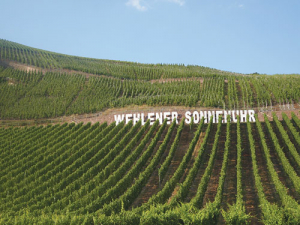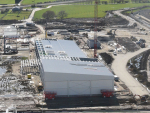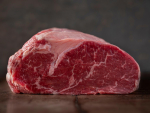We are here to cycle and I can’t help but marvel at the mountainous terrain above the flat pathway we are speeding along in the 35 degree European heatwave. It’s enough to give anyone pause for thought, let alone those of us cycling upwards of 80 kilometres a day.
I first visited this region nearly 20 years ago when my wine writing career was in its infancy and so was my daughter, Ruby, who took her first steps on the banks of the Mosel River while her father and I watched on proudly.
That journey was a combined work trip and family holiday and I have wanted to cycle the length of the river ever since. This year I finally did, although my new partner and I trimmed the trip in half, peddling 220 kilometres in three days rather than six, due to time constraints.
The Mosel has many claims to fame. It’s the best known of Germany’s 13 main wine regions. It’s the longest tributary of the Rhine River and it’s home to the steepest vineyards in the world with gradients of 65 to 70 degrees showing a spectacular determination to ripen grapes in a cool climate.
It is hard to imagine how these grapes are planted or pruned, let alone harvested. Many appear to be growing on ledges that look like a challenge to a skilled abseiler. Needless to say, it’s all about hand harvesting.
Riesling is queen of the Mosel, occupying at least 60 percent of the region’s vineyards. The balance is a smidgeon of Pinot Noir (approximately 10 per cent) a little Muller-Thurgau and a smattering of other whites.
The best wines from the Mosel have historically tended to be light in body and alcohol with high residual sugar but change is afoot. Climate change is having a dramatic impact here.
The region’s winemakers now pick earlier than in the past and at higher oeschle (the German must-weight – grape sugar - measurement, which determines the alcohol content of the wines). This means the wines often contain higher alcohol levels and are drier than they used to be. This doesn’t mean they taste austere or hot. Far from it. The wines of the Mosel that used to contain 7 percent alcohol are now nudging 10 or 11 percent, at a pinch.
The highlight of our three-day cycle tour was the beauty of the place and the great wines of Weingut Schloss Lieser. And being there. Our journey began in Trier, the oldest city in Germany. We finished in the city of Koblenz. Its name means confluence and it’s where the Mosel and the Rhine meet. On the first day of our trip, we popped in to Weingut Schloss Lieser for an extensive tasting that I had arranged prior to leaving New Zealand. The winery was originally established in 1875 and was taken over by winemaker Thomas Haag in the 1990s.
Talk about a blast from the past. When I first visited the Mosel region 17 years ago, I met his father, Wilhelm Haag, of Weingut Fritz Haag. This time round, it was another generation – Thomas’ daughter, Lara, who gave us an outstandingly insightful tasting through the great Rieslings of this small family owned winery.
Her grandfather (who I met all those years ago) is a member of the powerful VDP (Verband Deutscher Pradikatsweinguter); a body of people who have transformed the quality, style and the perception of German wine.
Her father, Thomas, is following in his father’s footsteps with great wines made from vineyards such as Wehlener Sonnenhur, Piesporter Goldtropfchen, Graacher Himmelreich and Niederberg Helden.
This trip was all about coming full circle, for me. In January this year, I finally opened one of the bottles I brought back from my first visit to the Mosel all those years ago. The 2000 Weingut Fritz Haag Brauneberger Juffer Auslese is from my daughter’s birth year, so we opened it to celebrate her 18th birthday. And we did so with trepidation. Wine lightly chilled and good glassware on hand, I gingerly tried to extract the cork, which disintegrated, so I sieved the wine into our glasses. It was fresh, luscious, like lemon zest and liquid honey. It was an incredible wine. Just like the region it comes from – and the 18-year-old I shared it with.
The 220 kilometre cycle in Germany’s heatwave was also incredible. Next time, I’m going to take it slowly and savour more Riesling along the way. I’ve seen Koblenz now. And it’s the journey that counts, after all.



